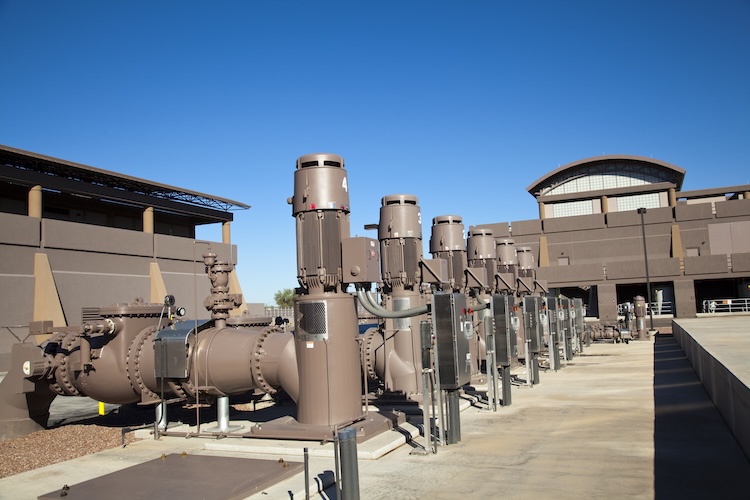Water and wastewater treatment facilities are more than just structures; they are essential public assets whose performance and longevity matter. Because of this, our approach goes well beyond simply supplying a coating product. We engage early in the design of the project—working hand in hand with owners, engineers, contractors, and applicators—to deliver coating solutions that align with project goals, site conditions, and life cycle demands.
Why Collaborative Design Matters
Design and construction teams have long depended on carefully written specifications to ensure quality and durability. In recent years, many water and wastewater owners have added collaborative delivery models—such as design-build or construction management at-risk (CMAR)—to further enhance coordination between disciplines. These models promote open communication, faster decision-making, and alignment of design intent with real-world constructability.
Suppliers and vendors are an integral element in the collaborative delivery process. For example, for coating manufacturers, that collaboration provides an opportunity to contribute their expertise at the same time the design is being shaped. This ensures that substrate preparation, asset access, sequencing, maintenance intervals, and operating conditions are all accounted for and that coatings performance is considered as an integral part of the asset strategy.
A well-executed collaborative design approach results in the following:
- Coating systems optimized for the actual exposure profile of each asset (steel piping, structural concrete, storage tanks, basins, etc.)
- Alignment between coating system, construction schedule, and long-term maintenance plan
- Mitigation of risks that can lead to costly rework or downtime
For example, in a major wastewater reclamation facility expansion in DeSoto, KS, the coating specialist, contractor, and owner worked as a team from early design through application, resulting in consistent performance across all process units.
Approach: How to Engage in the Project
As a coatings manufacturer, here’s how we typically operate in collaborative design settings for water and wastewater treatment plants:
- Early Engagement and Specification Review . As soon as the project scope is defined and preliminary drawings or specifications are under development, our technical experts meet with the engineering firm and owner to review service conditions (immersion, splash/dry, sludge contact, hydrogen sulfide, UV exposure, thermal cycling, etc.). We provide input on appropriate coating chemistries, acceptable film thicknesses, surface preparation standards, and expected service life.
- Coating System Design and Value Engineering. Based on the exposure profile and budget or maintenance goals, we propose a tailored coating system (i.e., primer, intermediate, topcoat) and highlight opportunities to reduce life cycle cost (e.g., specifying higher-performance systems that avoid future maintenance expenses and reduce operational disruption). Some systems may include specialized linings for potable water storage tanks or acid-resistant mortars for sludge troughs.
- Constructability Review and Trade Coordination . We coordinate with the contractor, applicator, and other trades to ensure that substrate preparation, access, environmental conditions (humidity, temperature), cure times, seasonal constraints, and scheduling are all understood. Because many water and wastewater facilities remain operational during renovation or expansion, sequencing is critical. Collaborative planning helps all parties maintain production and quality standards without interrupting service.
- Specification Documentation and Quality Assurance . Once the system is selected, we assist with specifications that include application guidelines, surface preparation standards (e.g., SSPC/NACE), test methods, and inspection or acceptance criteria. We support the owner and inspector in verifying compliance to ensure coatings are installed correctly and deliver the long service life intended.
- On-Site Technical Support, Training, and Start-Up Maintenance. During the application phase, we provide field technical support, training for applicators (correct spray or roll technique, film build, cure, holiday testing), and we help establish a maintenance plan (inspection schedule, repair procedures). Because coatings are part of the asset’s integrity strategy, our work continues well beyond product delivery.
Benefits to the Project Owner and Community
Operating in a collaborative, design-integrated manner can bring several tangible benefits:
- Extended asset life / reduced life cycle cost: Properly designed coating systems minimize repaint or relining frequency, reduce downtime, and decrease maintenance costs.
- Improved scheduling and risk management: Early coordination of coatings avoids delays and ensures compatibility among trades and materials.
- Superior performance under harsh conditions: Treatment plants face corrosion, chemical attack, immersion, and abrasion. The right coating system provides long-term protection in these environments.
- Enhanced safety, compliance, and reliability: A well-protected facility experiences fewer leaks or failures and maintains consistent uptime, which matters because communities depend on clean water and reliable wastewater processing.
- Sustainability and public image: Longer coating life means fewer recoats, less waste, and reduced environmental impact from maintenance cycles.
Closing Thoughts
At Tnemec Company, we believe coatings are not an isolated component but an integral part of the design and construction strategy for water and wastewater infrastructure. When we engage early, collaborate with the entire project team, and align our systems with owner goals and operating realities, we can help deliver infrastructure that lasts for years.
Whether you’re designing a new treatment plant, rehabilitating an existing clarifier, or upgrading storage tanks, collaborating early with suppliers such as coatings manufacturers can bring the technical expertise, specification insight, sequencing, and field support to make your project a success.

